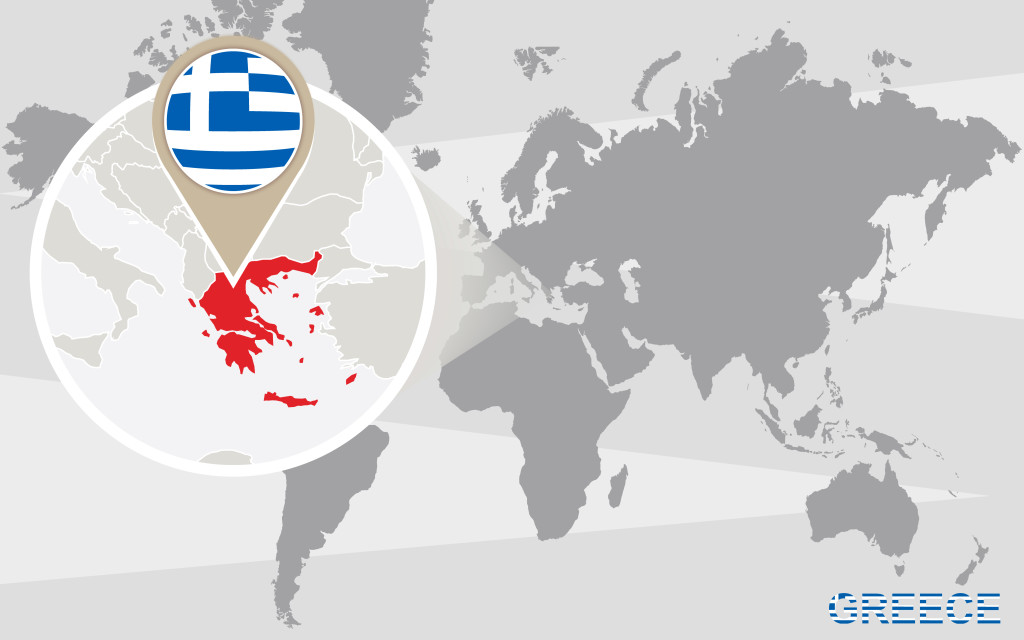
ALEXANDROUPOLIS, Greece – A day after 46 migrants drowned in a choppy Aegean Sea, protesters demonstrated Saturday at a Greek border town to demand that Greece ease transit restrictions at its heavily militarized border with Turkey.
Most of the 200-kilometer (124-mile) land border between Greece and Turkey is separated by the Evros River – known as the Meric River in Turkey. But a 12.5-kilometer (nearly 8-mile) stretch of land separating the two countries was previously lined with minefields and is now separated by a fence.
The area is guarded with police and military patrols on land and on the river, a network of cameras and a few officers from the European border protection agency, Frontex.
Wearing life vests and foil blankets, the demonstrators chanted “This fence means refugees drown!” as they kicked off two days of protests in the area. They are planning a march Sunday toward the border fence.
“It’s vital that the fence is removed. It’s because of the fence that refugee families are forced to travel across the Aegean, and people are drowning on a daily basis,” said protester Michalis Sopatzoglou, who travelled from the Greek island of Lesbos to join Saturday’s rally.
At least 60 people have died in Greek waters this month while trying to cross from Turkey to the Greek islands in poor weather, using unseaworthy boats provided by Turkish smuggling gangs.
High winds on Saturday disrupted plans by Greek Coast Guard divers to search for bodies off the island of Kalymnos, where most of the people in Friday’s accidents died.
Marie Elisabeth Ingres, Greek mission chief for the charity Doctors Without Borders, or MSF, said creating a “safe point of passage” at the Greek-Turkish border should be a priority.
“Since the beginning of this crisis, MSF has been calling for legal and safe reception to be made available at the land border between Turkey and Greece,” she told The Associated Press. “At present… people are effectively blocked from crossing it and have no other option but to turn to illegal means to reach the continent, risking their lives and often the lives of their families at sea.”
More than 850,000 asylum-seekers traveled to Greek islands in 2015 on their journey to central and northern Europe, in the continent’s worst refugee crisis since World War II. Only 3,600 crossed the Greek-Turkish land border in the previous 12 months.
A transit camp for refugees near the Greek border town of Orestiada, visited by The Associated Press, currently has just 40 occupants. Those conditions contrast sharply with overcrowded refugee facilities on Lesbos and other Greek islands, where arrivals averaged 2,300 people a day last year and peaked at around 7,000.
Migration Minister Ioannis Mouzalas said has said it was “impossible under present conditions” to allow mass screening at the land border.
“In the 12.5-kilometer area of the land border, the problem has been solved. The number of crossings is zero,” said Police Col. Paschalis Siritoudis, head of the Orestiada police department.
Siritoudis heads a police campaign launched four years ago that dramatically slowed the number of migrants crossing the land border from Turkey to Greece. Groups of migrants are typically spotted using night-vision surveillance cameras and deterred from crossing the Evros River.
“Some people are of the opinion that the fence should go. We are carrying out the orders of the (police) and political leadership,” Siritoudis said. “The fence is there. It is supported by cameras and patrols and we continue to operate this way until the orders change.”
___
Online:
Amnesty International report on border fences: https://goo.gl/H7vsmK